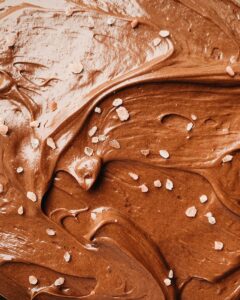The history of chocolate is a rich and fascinating narrative that dates back thousands of years. This delicious treat, which is adored by millions across the globe, has its origins in the ancient civilizations of Central and South America. Chocolate is derived from the cacao tree, scientifically known as Theobroma cacao, which grows in the tropical regions of Central and South America. The history of chocolate is a story of innovation, discovery, and the continuous quest for the perfect chocolate taste.

The History of Chocolate
The chocolate-making process begins with the cacao fruit, which contains cacao beans. These beans are harvested, fermented, and then dried to produce the primary ingredient for chocolate, the cacao bean. The history of chocolate can be traced back to ancient Mayan and Aztec civilizations, where they consumed chocolate as a bitter beverage mixed with chili peppers, known as the Mayan chocolate. Cacao beans were so valuable that they were often used as a form of currency in these societies.
The first recorded use of chocolate as a beverage dates back to the Olmec civilization around 1900 BC, when prepared a chocolate drink by grinding roasted cocoa beans and mixing them with water. This chocolate drink, which was consumed by the elite, was a far cry from the sweet hot chocolate we know today. The preparation of chocolate drinks became an essential part of the culture in Central and South America, with cacao beans being used in religious ceremonies and as a luxury item.
It wasn’t until the arrival of Europeans in the 16th century that chocolate was introduced to the Old World. The Spanish conquistadors, who were initially unimpressed by the bitter taste of chocolate drinks, soon discovered that adding cane sugar could transform these beverages into a sweet and palatable treat. This marked a significant milestone in the history of chocolate, as it opened up new possibilities for the creation of different chocolate products.
As chocolate became more popular in Europe, the demand for cacao beans grew, leading to the establishment of cacao plantations in South America and the Caribbean. The production process of chocolate was further refined with the invention of the cocoa press by Dutch chemist Coenraad Johannes van Houten in 1828. This revolutionary device allowed for the extraction of cocoa butter from roasted cocoa beans, leaving behind cocoa powder. Van Houten’s invention led to the creation of Dutch cocoa, which was less bitter and more soluble in water than earlier forms of powdered chocolate. Delving into the significance of cocoa rituals provides a deeper understanding of the cultural importance of cacao throughout history.
The development of milk chocolate is another significant milestone in the history of chocolate. In 1875, Swiss chocolatier Daniel Peter discovered that adding dried milk powder to chocolate would create a smoother, creamier texture. This innovative technique allowed him to create milk chocolate, which quickly became a popular product in the global chocolate market. The first chocolate bar was produced by Joseph Fry in 1847, who discovered that adding melted cacao butter to cocoa powder would create a solid chocolate bar. This marked the beginning of the modern era of chocolate bars and chocolate candies, a transition well illustrated by the differences in artisanal vs. mass-produced chocolate.
The history of chocolate has been a continuous process of experimentation and innovation. In the late 19th and early 20th centuries, many family chocolate companies emerged, each with unique recipes and techniques for creating new chocolate products. One such example is the invention of chocolate-coated caramels by Milton S. Hershey, who went on to establish the Hershey Chocolate Company in 1894. Another example is the creation of dark chocolate, which contains a higher percentage of cocoa solids and less sugar than milk chocolate. These innovations continue to influence modern chocolate creations, as seen in the rise of unique flavored chocolate bars and the cultural phenomena of chocolate fashion shows. Additionally, learning about ancient chocolate practices can provide further context to the ongoing evolution of chocolate artistry.
The Chocolate Today
Today, chocolate comes in a vast array of forms, from chocolate bars to truffles, and from hot chocolate to cocoa powder. The history of chocolate has been shaped by the passion and dedication of countless individuals, from the ancient civilizations of Central and South America to the European chocolatiers who refined and transformed the chocolate-making process. The future of chocolate is equally exciting, with new innovations and techniques being developed to create even more delicious and sustainable chocolate products.
In conclusion, the history of chocolate is a captivating tale of discovery, transformation, and innovation. From its humble beginnings as a bitter beverage consumed by ancient civilizations in Central and South America to the vast array of chocolate products available today, the story of chocolate is a testament to human ingenuity and the pursuit of perfection. As we continue to enjoy our favorite chocolate treats, it is essential to remember and appreciate the rich history and the many individuals who have contributed to the delicious world of chocolate.
- The Therapeutic Benefits Of Chocolate Making Workshops
- The Significance Of Cocoa Rituals
- The Science Of Milk Chocolate
- The Psychology Behind Gifting Chocolate
- The History Of Chocolate
- The Benefits Of Single Origin Chocolate
- The Art Of Chocolate Packaging Design
- The Allure Of Vintage Chocolate Advertisements
